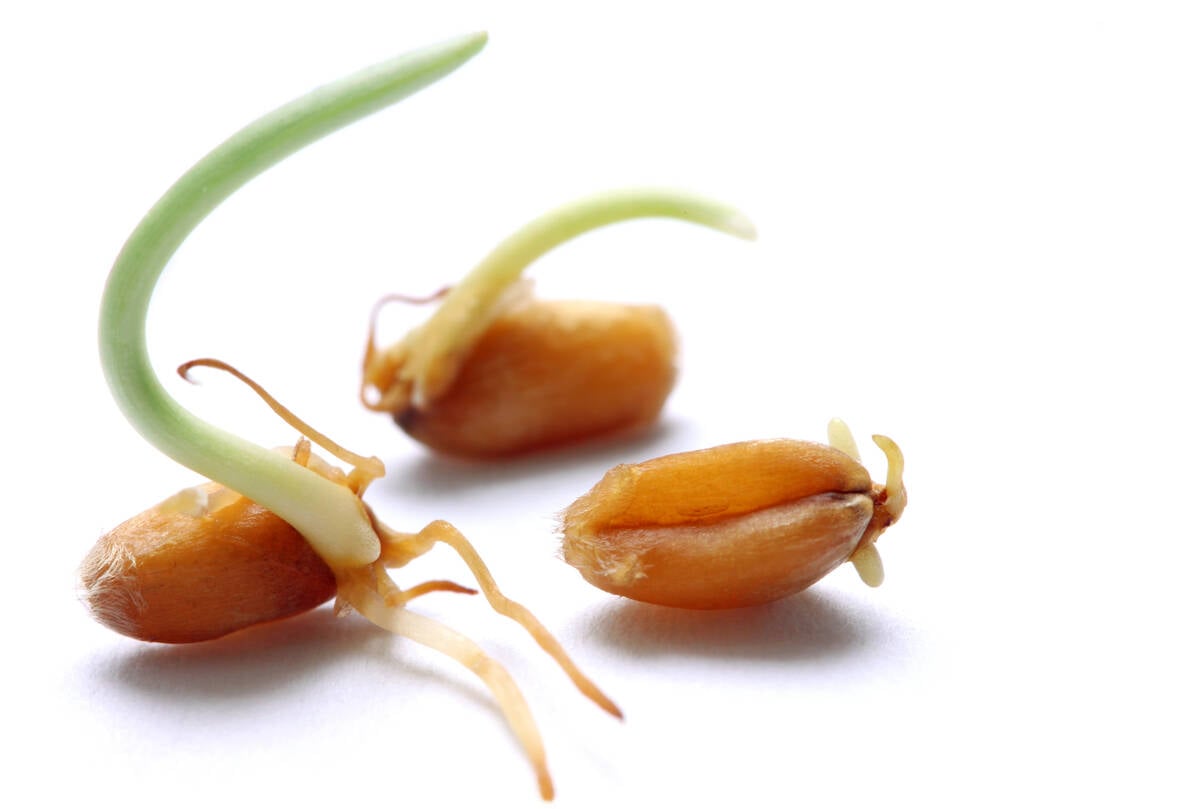LEWVAN, Sask. – Think you’re putting in enough seed? Think again.
“Last year 80 percent of the fields I walked were not at an optimum plant density,” Phil Thomas of Agri-Trend Agrology told a recent field day.
He said farmers don’t believe seed mortality rates will be as high as they are and they don’t account for the differences in kernel weights of different varieties.
Thomas asked Jeff Farr, co-host of the field day at a Field of Dreams demonstration site near Lewvan, how much he had allowed for seed mortality. When Farr said 10 percent, Thomas told him he was about five percent higher than most people.
Read Also

Manitoba farmers fight sprouted wheat after rain
Rain in mid-September has led to wheat sprouting problems in some Manitoba farm fields.
And the real answer could be as much as 50 percent, depending on the crop.
“You get your highest yield when the seed is in the bag,” Thomas joked.
A wheat field grown in good moisture conditions should have approximately 210 plants per sq. metre, he said. With a 40 percent difference in 1,000-kernel weight among varieties, plant populations can vary dramatically if farmers establish seeding rates by pounds or bushels alone and use the same amount for each variety.
In canola, the difference is 100 percent.
“How much is a bushel?” Thomas asked. “And how many plants will you get?”
During the field day, a count of one sq. m found 255 wheat plants with 686 heads. Thomas projected that could lead to a yield of 130 bu. per acre.
Crops do better if optimum plant density is achieved, he said. A uniform population matures more evenly and crops can better compete with weeds.
Thomas said better yields come from strong main stems. Correct plant numbers can keep tillers in check.
“What you want is more main stems.”
He said formulas are available from provincial agriculture departments and other sources to calculate seeding rates based on optimum plant populations.















